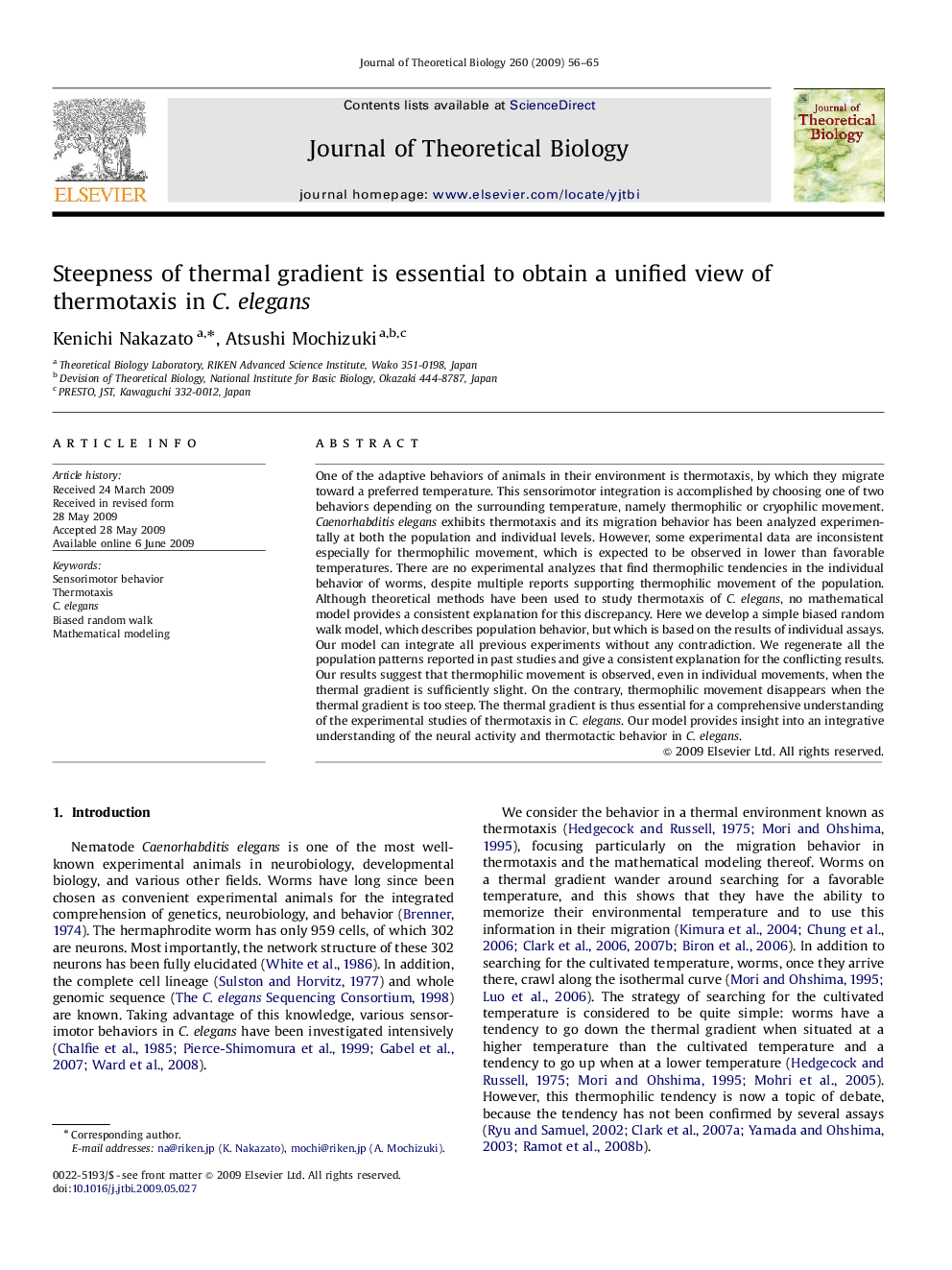| Article ID | Journal | Published Year | Pages | File Type |
|---|---|---|---|---|
| 4498013 | Journal of Theoretical Biology | 2009 | 10 Pages |
One of the adaptive behaviors of animals in their environment is thermotaxis, by which they migrate toward a preferred temperature. This sensorimotor integration is accomplished by choosing one of two behaviors depending on the surrounding temperature, namely thermophilic or cryophilic movement. Caenorhabditis elegans exhibits thermotaxis and its migration behavior has been analyzed experimentally at both the population and individual levels. However, some experimental data are inconsistent especially for thermophilic movement, which is expected to be observed in lower than favorable temperatures. There are no experimental analyzes that find thermophilic tendencies in the individual behavior of worms, despite multiple reports supporting thermophilic movement of the population. Although theoretical methods have been used to study thermotaxis of C. elegans, no mathematical model provides a consistent explanation for this discrepancy. Here we develop a simple biased random walk model, which describes population behavior, but which is based on the results of individual assays. Our model can integrate all previous experiments without any contradiction. We regenerate all the population patterns reported in past studies and give a consistent explanation for the conflicting results. Our results suggest that thermophilic movement is observed, even in individual movements, when the thermal gradient is sufficiently slight. On the contrary, thermophilic movement disappears when the thermal gradient is too steep. The thermal gradient is thus essential for a comprehensive understanding of the experimental studies of thermotaxis in C. elegans. Our model provides insight into an integrative understanding of the neural activity and thermotactic behavior in C. elegans.
